Introduction
According to FAO (2013), approximately two billion people suffer with micronutrient deficiency of some kind. The introduction of biofortified crops – varieties improved through selective breeding in order to achieve higher micronutrient contents – may complement existing interventions and allow, on a sustainable way, to reach populations with low access to formal health systems and markets.
Objective of the practice
To reach 20 million rural families until 2020 and one billion consumers until 2030, worldwide, through the development of inclusive and sustainable markets for biofortified crops.
Key stakeholders and partnerships
Research is carried in partnership with several universities; technology transfer is carried with the support of local governments and state and municipal institutions; between financing entities, we count Embrapa (Brazilian Agricultural Research Corporation), the Government of Maranhão State and HarvestPlus. Family farmers are program’s main beneficiaries.
Implementation of the Project/Activity
The practice starts with research, when the best specimens are selected and crossed successively until a new variety with higher micronutrient content and favorable agronomic characteristics is obtained. After obtaining the improved cultivars, both recipes and processed products are developed. All materials produced by the project (cultivars and processed goods) are tested for quality control of nutritional components. Then, acceptance studies are carried with producers and consumers. Finally, technology transfer actions are carried in order to reach farmers, focusing on family farmers. All stages are monitored an obtained results are kept within a database for later analysis, allowing for constant improvement.
Results/Outputs/Impacts
Between 2005 and 2010, research and development was the focus. Nowadays, the project has the sweet potato Beauregard as a recommended cultivar, and the folloing released cultivars: BRS Amélia (sweet potato); BRS Jari, BRS Gema de Ovo and BRS Dourada (cassava); BRS 4104 (maize); BRS Supremo, BRS Cometa and BRS Sublime (common beans); BRS Aracê, BRS Tumucumaque and BRS Xiquexique (cowpea beans). All these are considered biofortified, i.e., with higher amounts of a target micronutrient.
After this initial stage, technology transfer became the focus. Until 2018, around 40000 families (approximately 200 thousand people) were reached. In addition, several demonstrative and multiplication units for the cultivars were implemented on different cities and the Project became part of public policies.
Research also generates several papers published in international journals. Plus, the project has published 3 recipe books.
Enabling factors and constraints
Main enabling factors were Embrapa’s solidity, providing the necessary infrastructure and a competent staff of researchers, technicians and specialists; the constant support from HarvestPlus; and the several partnerships within public and private sectors, which guaranteed necessary funds and collaboration on the development of all of the project’s stages. All this allowed the project to release new cultivars with improved qualities.
Main challenges were working throughout a country as large as Brazil, where different territories have distinct climates, soils and cultures, demanding not only specific cultivars for each area, but also a skilled coordination of logistics and management of human capital. Guaranteeing the funds needed for a project this big is also a constant challenge.
Sustainability and replicability
Biofortification, in this context, is a global project already being implemented in different countries around the world: in Latin America and the Caribbean, Africa and Asia. Sustainability is key, as biofortified varieties usually carry improved agronomic characteristics, resulting in better yields and a differentiated product, which may allow producers to improve their economic situation. In addition, the project is concerned with the best practices within agriculture and usually combines technology transfer of the cultivars per se with enabling the producers to have access to solar panels and equipment for irrigation through water dripping, which saves water when compared to conventional practices.
Conclusions
Biofortification contributes to the fight against hidden hunger (malnutrition caused not by the lack of food itself, but lack of proper micronutrient ingestion), which may cause several health issues, specially between lower social classes and developing countries; while promoting a sustainable insertion of small producers within local markets and the sustainable use of water and clean sources of energy.
Other sources of information
biofort.com.br
harvestplus.org
ciat.cgiar.org
embrapa.br
lac.harvestplus.org
Goal 1
1.2 - By 2030, reduce at least by half the proportion of men, women and children of all ages living in poverty in all its dimensions according to national definitions
1.4 - By 2030, ensure that all men and women, in particular the poor and the vulnerable, have equal rights to economic resources, as well as access to basic services, ownership and control over land and other forms of property, inheritance, natural resources, appropriate new technology and financial services, including microfinance
1.a - Ensure significant mobilization of resources from a variety of sources, including through enhanced development cooperation, in order to provide adequate and predictable means for developing countries, in particular least developed countries, to implement programmes and policies to end poverty in all its dimensions
1.b - Create sound policy frameworks at the national, regional and international levels, based on pro-poor and gender-sensitive development strategies, to support accelerated investment in poverty eradication actions
Goal 2
2.1 - By 2030, end hunger and ensure access by all people, in particular the poor and people in vulnerable situations, including infants, to safe, nutritious and sufficient food all year round
2.2 - By 2030, end all forms of malnutrition, including achieving, by 2025, the internationally agreed targets on stunting and wasting in children under 5 years of age, and address the nutritional needs of adolescent girls, pregnant and lactating women and older persons
2.4 - By 2030, ensure sustainable food production systems and implement resilient agricultural practices that increase productivity and production, that help maintain ecosystems, that strengthen capacity for adaptation to climate change, extreme weather, drought, flooding and other disasters and that progressively improve land and soil quality
2.a - Increase investment, including through enhanced international cooperation, in rural infrastructure, agricultural research and extension services, technology development and plant and livestock gene banks in order to enhance agricultural productive capacity in developing countries, in particular least developed countries
Goal 3
3.1 - By 2030, reduce the global maternal mortality ratio to less than 70 per 100,000 live births
3.2 - By 2030, end preventable deaths of newborns and children under 5 years of age, with all countries aiming to reduce neonatal mortality to at least as low as 12 per 1,000 live births and under-5 mortality to at least as low as 25 per 1,000 live births
Goal 4
4.4 - By 2030, substantially increase the number of youth and adults who have relevant skills, including technical and vocational skills, for employment, decent jobs and entrepreneurship
4.5 - By 2030, eliminate gender disparities in education and ensure equal access to all levels of education and vocational training for the vulnerable, including persons with disabilities, indigenous peoples and children in vulnerable situations
4.7 - By 2030, ensure that all learners acquire the knowledge and skills needed to promote sustainable development, including, among others, through education for sustainable development and sustainable lifestyles, human rights, gender equality, promotion of a culture of peace and non-violence, global citizenship and appreciation of cultural diversity and of culture’s contribution to sustainable development
Goal 5
5.b - Enhance the use of enabling technology, in particular information and communications technology, to promote the empowerment of women
Goal 6
6.4 - By 2030, substantially increase water-use efficiency across all sectors and ensure sustainable withdrawals and supply of freshwater to address water scarcity and substantially reduce the number of people suffering from water scarcity
6.5 - By 2030, implement integrated water resources management at all levels, including through transboundary cooperation as appropriate
6.6 - By 2020, protect and restore water-related ecosystems, including mountains, forests, wetlands, rivers, aquifers and lakes
6.b - Support and strengthen the participation of local communities in improving water and sanitation management
Goal 7
7.2 - By 2030, increase substantially the share of renewable energy in the global energy mix
Goal 8
8.2 - Achieve higher levels of economic productivity through diversification, technological upgrading and innovation, including through a focus on high-value added and labour-intensive sectors
8.3 - Promote development-oriented policies that support productive activities, decent job creation, entrepreneurship, creativity and innovation, and encourage the formalization and growth of micro-, small- and medium-sized enterprises, including through access to financial services
Goal 10
10.2 - By 2030, empower and promote the social, economic and political inclusion of all, irrespective of age, sex, disability, race, ethnicity, origin, religion or economic or other status
Goal 12
12.7 - Promote public procurement practices that are sustainable, in accordance with national policies and priorities
12.a - Support developing countries to strengthen their scientific and technological capacity to move towards more sustainable patterns of consumption and production
Goal 13
13.1 - Strengthen resilience and adaptive capacity to climate-related hazards and natural disasters in all countries
13.3 - Improve education, awareness-raising and human and institutional capacity on climate change mitigation, adaptation, impact reduction and early warning
Goal 15
15.9 - By 2020, integrate ecosystem and biodiversity values into national and local planning, development processes, poverty reduction strategies and accounts
Goal 17
17.3 - Mobilize additional financial resources for developing countries from multiple sources
Technology -
17.6 - Enhance North-South, South-South and triangular regional and international cooperation on and access to science, technology and innovation and enhance knowledge sharing on mutually agreed terms, including through improved coordination among existing mechanisms, in particular at the United Nations level, and through a global technology facilitation mechanism
Capacity-Building -
17.9 - Enhance international support for implementing effective and targeted capacity-building in developing countries to support national plans to implement all the sustainable development goals, including through North-South, South-South and triangular cooperation
17.14 - Enhance policy coherence for sustainable development
17.16 - Enhance the global partnership for sustainable development, complemented by multi-stakeholder partnerships that mobilize and share knowledge, expertise, technology and financial resources, to support the achievement of the sustainable development goals in all countries, in particular developing countries
17.17 - Encourage and promote effective public, public-private and civil society partnerships, building on the experience and resourcing strategies of partnerships
Data, monitoring and accountability
17.18 - By 2020, enhance capacity-building support to developing countries, including for least developed countries and small island developing States, to increase significantly the availability of high-quality, timely and reliable data disaggregated by income, gender, age, race, ethnicity, migratory status, disability, geographic location and other characteristics relevant in national contexts
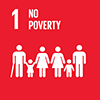
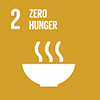
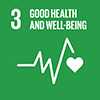
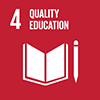
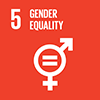
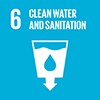
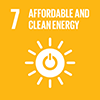
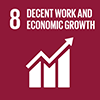
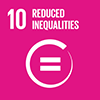
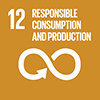
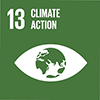
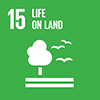
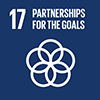
 Start: 02 January, 2015
Start: 02 January, 2015 Completion: 31 December, 2030
Completion: 31 December, 2030